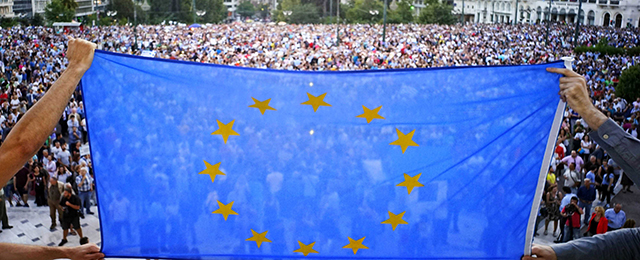The controls in Iceland stem from the fact that with its own currency and a huge inflow of foreign funds seeking the country’s high interest rates in the years up to the collapse in October 2008, Iceland enjoyed – and then suffered – the consequences just like emerging markets in Asia in the 1980s and 1990s.
Enjoyed, because these inflows kept the value of the króna, ISK, very high and all of Iceland’s 300.000 inhabitants lived for a few years with a very high-valued króna, creating the illusion that the country was better off than it really was. After all, this was a sort of windfall, not a sustainable gain or growth in anything except these fickle inflows.
Suffered, because when uncertainty hit the flows predictably seeped out and Iceland’s foreign currency reserves suffered. As did the whole of the country, very dependent on imports, as the rate of the ISK fell rapidly.
During the boom, Icelandic regulators were unable, and to some degree unwilling, to rein in the Icelandic banks’ insane foreign expansion. On the whole, there was little understanding of the danger and challenge to financial stability that was building up. It was as if the Asia crisis had never happened.
As the banks fell over October 6-9 2008, these inflows amounted to ISK625bn, now $4.6bn, or 44% of GDP. These were the circumstances when the controls were imposed in Iceland due to lack of foreign currency for all these foreign-owned ISK. The controls were implemented on November 29 2008, after Iceland had entered an IMF programme supported by an IMF loan of $2.1bn. (Ironically, Poul Thomsen who successfully oversaw the Icelandic programme is now much maligned for overseeing the Greek IMF programme – but then, Iceland is not Greece and vice versa.)
With time, this amount of foreign-owned ISK has dwindled and is now at 15% of GDP. But another pool of foreign-owned ISK has emerged in the estates of the failed bank, amounting to ca. ISK500bn, $3.7bn, or 25% of GDP.
In early June this year, the government announced a plan to lift capital controls – it will take some years, partly depending on how well this plan is executed (see more here, toungue-in-cheek and, more seriously, here).
Greece – bank-outflow controls
The European Central Bank, ECB, has kept Greek banks liquid over many months with its Emergency Liquid Assistance, ELA. In light of the Greek government’s decision to buy time with a referendum on the Troika programme and the ensuing uncertainty, this assistance is now severely tested. The logical (and long-expected) step to stem the outflows from banks is to limit funds taken out of the banks.
This means that the Greek controls are only on outflow from banks. The Greek controls, as the ones imposed previously in Cyprus, have nothing to do with the value or convertibility of the euro in Greece. The value of the Greek euro is the same as the euro in all other countries. All speculation to the contrary seems to be entirely based on either wishful thinking or misunderstanding of the controls.
However, it seems that ELA is hovering close to its limits. If it is correct that Greek ELA-suitable collaterals are €95bn and the ELA is already hovering around €90bn – the situation, also in respect, is precarious.
How quickly to lift – depends on type of controls
The Icelandic type of capital controls is typically difficult to lift because either the country has to make an exorbitant amount of foreign currency, which is not likely, a write-down on the foreign-owned ISK or binding outflows over a certain time. The Icelandic plan makes use of the last two options.
Lifting controls on outflow from banks takes less time, as shown in Cyprus, because the lifting then depends on stabilising the banks and to a certain degree trusting the banks.
This certainly is a severe problem in Greece where the banks are only kept alive with ELA – funding coming from a source outside of Greece. This source, ECB, is clearly unwilling to play a political role; it will want to focus on its role of maintaining financial stability in the Eurozone. (I very much understand the June 26 press release from the ECB as a declaration that it will stick with the Greek banks as long as it possibly can; ECB is not only a fair-weather friend…)
Without the IMF it would have been difficult for Iceland to gain trust abroad for its crisis actions – but Greece is not only dependent on the Eurozone for trust, but also on the ECB for liquidity. Without ELA there are no functioning Greek banks. If the measures to stabilise the banks are to be successful, the controls are only the first step.
*Together with professor Þórólfur Matthíasson I have earlier written on what Icelandic lessons could be used to deal with the Greek banks. – Cross-posted at Fistful of euros.






Be the first to comment on "Capital controls: Greece and Iceland"